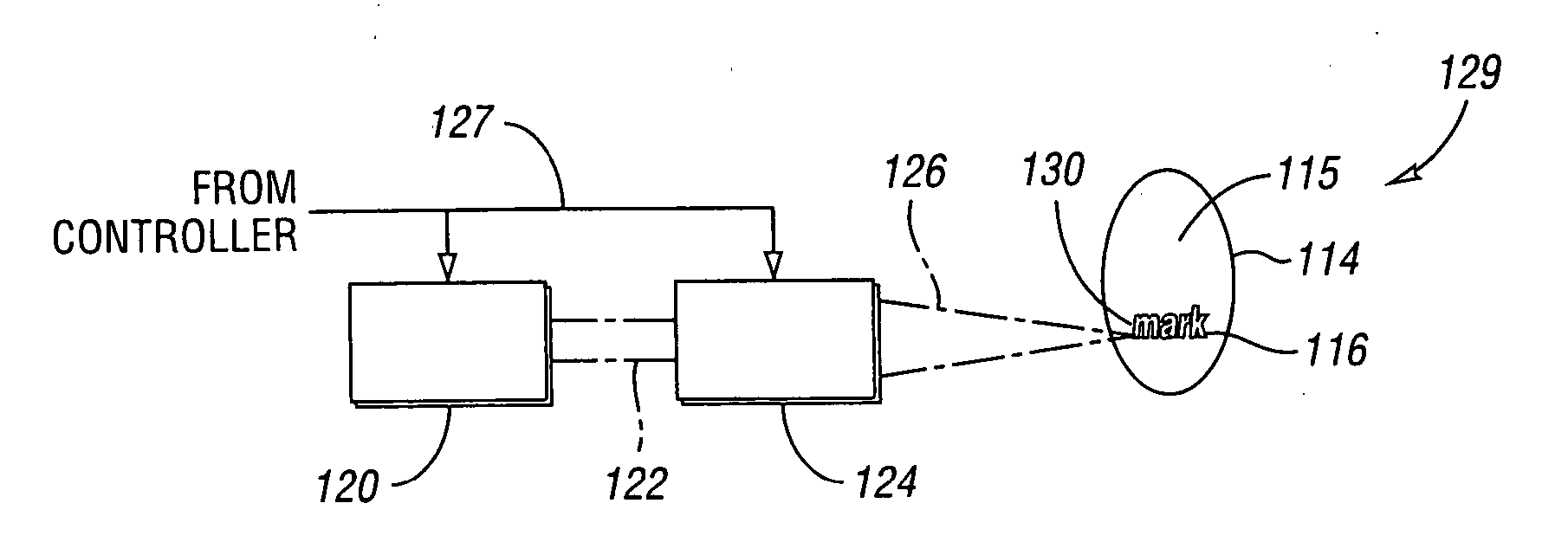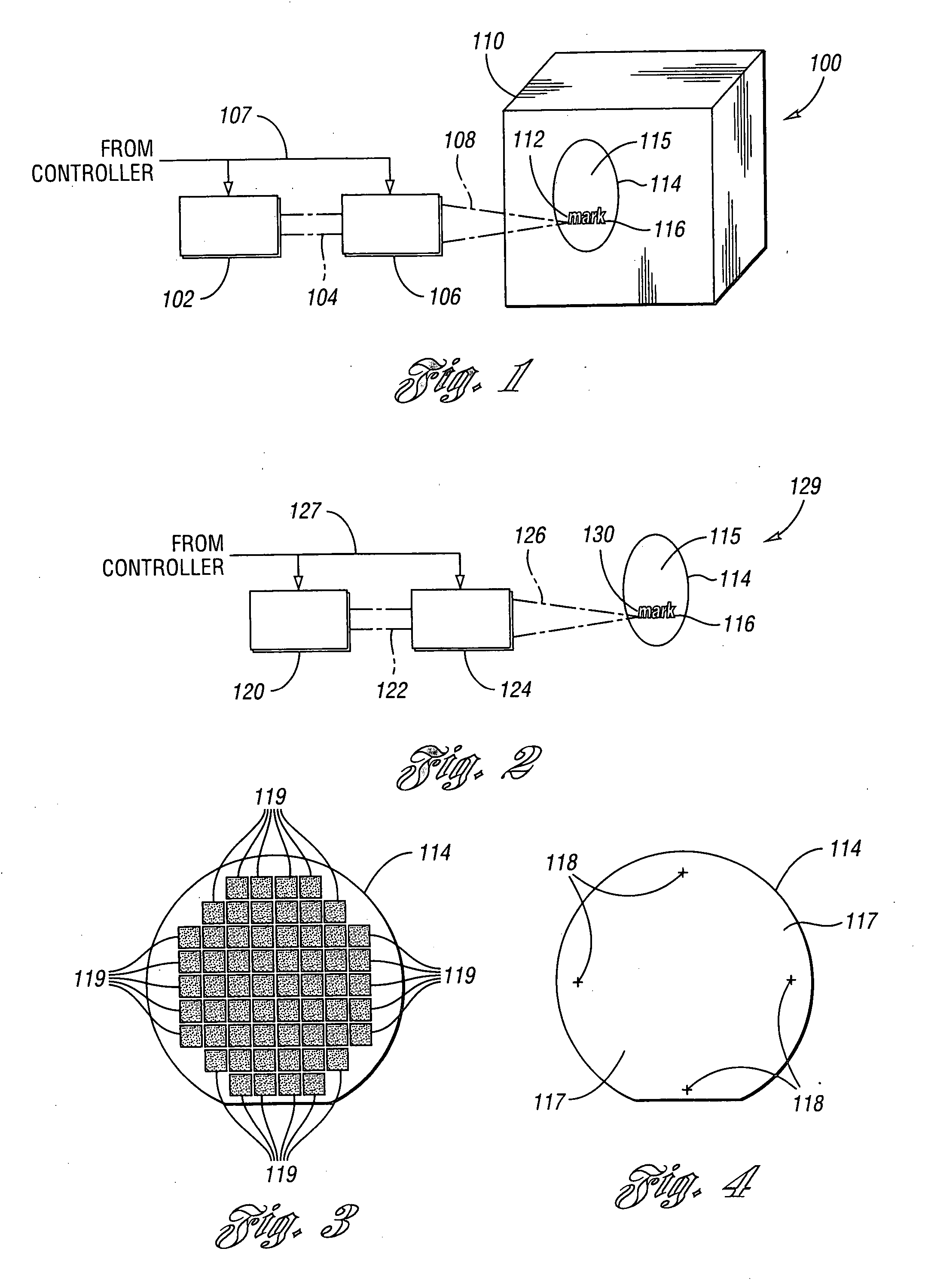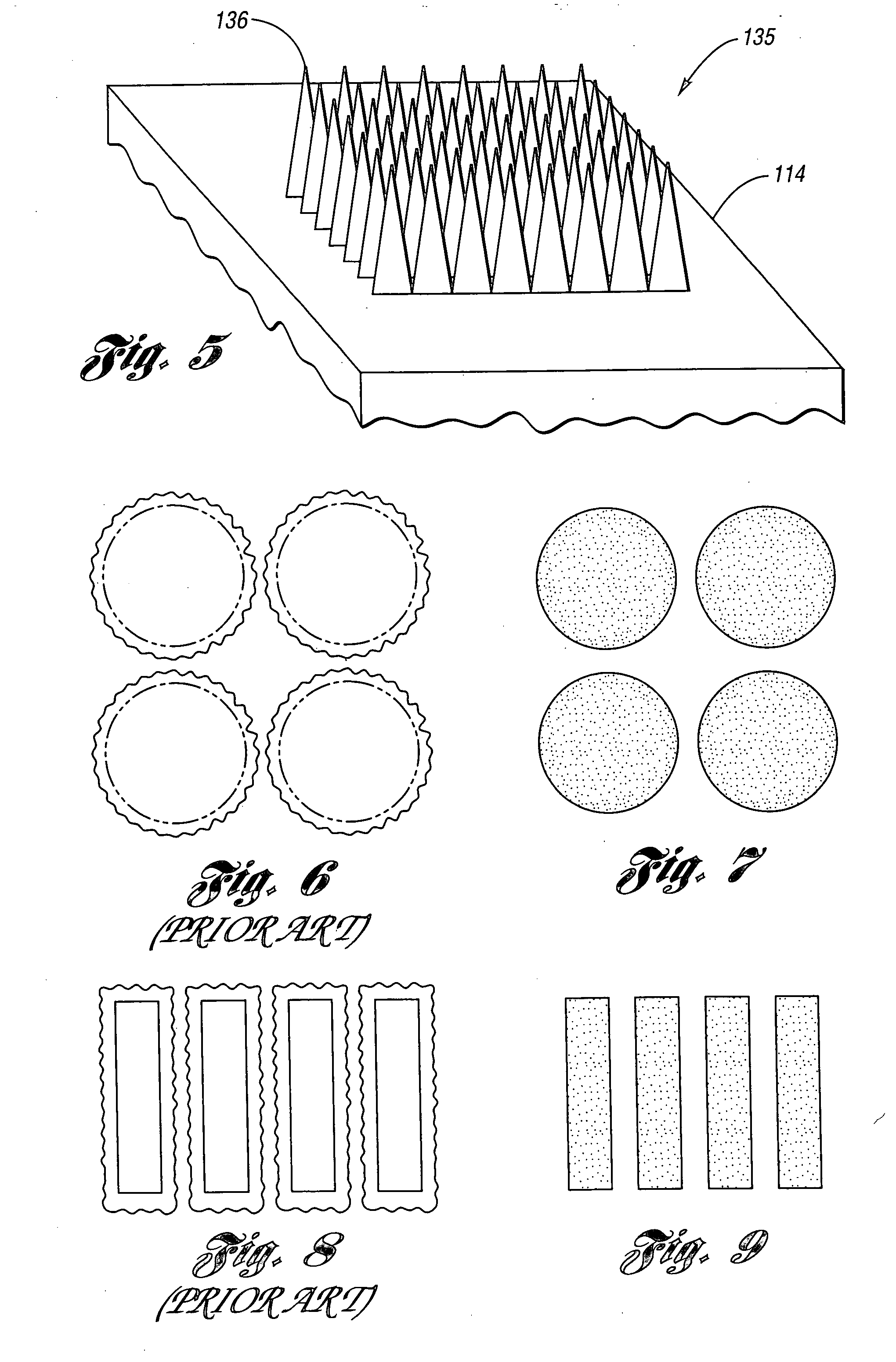Laser-based method and system for processing targeted surface material and article produced thereby
a surface material and laser technology, applied in the field of laser marking and texturing, can solve the problems of continued shrinkage of die size, unsuitable for present and emerging requirements, and traditional wafer marking systems, and achieve the effect of reducing reflection of energy used and increasing surface roughness
- Summary
- Abstract
- Description
- Claims
- Application Information
AI Technical Summary
Benefits of technology
Problems solved by technology
Method used
Image
Examples
Embodiment Construction
[0133] For the purpose of the following description of various embodiments of the invention, the following non-limiting guidelines are used:
[0134]“Ultrafast laser” or “ultrashort laser” generally refers to a pulsed laser providing one or more pulses, each pulse having a duration below 1 ns, for instance 100 ps or less, or typically less than 10 ps;
[0135]“Microtexture” generally refers to micron sized surface variations, but may also include surface variations of a finer scale, for instance 0.5 microns or 0.1 microns; and
[0136]“Nanotexture” generally refers to surface variations below one micron in size.
Overview
[0137] New laser marking technology has been developed to overcome limitations of present laser marking systems. Permanent and high contrast shallow marks (less than 1 micron) on the backside of wafers are achieved with little or no material removed by using this new laser technology. Viewing of these marks is strongly independent of the viewing angle, a significant adva...
PUM
 Login to View More
Login to View More Abstract
Description
Claims
Application Information
 Login to View More
Login to View More - R&D
- Intellectual Property
- Life Sciences
- Materials
- Tech Scout
- Unparalleled Data Quality
- Higher Quality Content
- 60% Fewer Hallucinations
Browse by: Latest US Patents, China's latest patents, Technical Efficacy Thesaurus, Application Domain, Technology Topic, Popular Technical Reports.
© 2025 PatSnap. All rights reserved.Legal|Privacy policy|Modern Slavery Act Transparency Statement|Sitemap|About US| Contact US: help@patsnap.com



